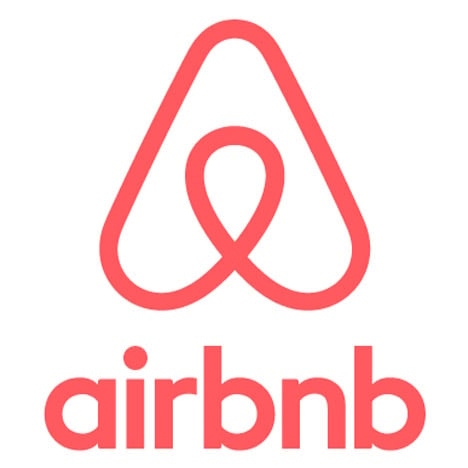Does anyone really know what growth hacking means? I could literally say anything and you'd have to believe me. Webster's Dictionary defines growth hacking as going full Mr Robot on a daffodil. No, it's about eating 50 Petit Filous so you grow tall enough to join the school basketball team. Take your pick.

Okay, okay. A real definition. Growth hacking is, basically, a term used for any strategy focused on growth, especially in regards to early-stage start-ups. This is usually who needs to see a large amount of growth, in a small amount of time.
Think small budget, small amount of time, big growth. So, growth hacking answers the question: "How can I gain as many customers as possible, with limited resources?" It's about focusing on the most cost-effective solutions.
The term “growth hacking” was coined by Sean Ellis, founder and CEO of GrowthHackers, in 2010, and offers a term that goes beyond "growth" or "growth marketing", and instead focuses on an extra bit of effort on top of current plans. This is summarised by Ward van Gasteren, who suggests that:
“Growth hacking is great to kickstart growth, test new opportunities and see what tactics work.
Marketeers should be there to continue where the growth hackers left off: build out those strategies, maintain customer engagement and keep tactics fresh and relevant.”
So, will growth hacking replace traditional marketing? Well luckily we've got a whole section coming up now, asking specifically:
Will growth hacking replace traditional marketing?
No!
Okay, on to the next bit.
Oh, right, you want more? For goodness' sake. Right, well, short answer: No, growth hacking will not be a substitute for marketing, traditional or digital. In fact, they're all linked. Both need experimentation, creativity, and measurement in order to succeed. Plus, they both need to work together.
In start-ups, growth hacking can happen, and be cultivated within, a marketing team. And if you have more team members, and more resources, there can be a separate, cross-function growth contingent.
Plus, the two share similar metrics, such as increasing a number of different customer behaviours. These are; engagement, conversion, and retention.
Where growth hacking and traditional marketing differ is the extent of their goals. Growth hacking relies on setting highly defined, but achievable, goals. These allow for the move towards growth using specific and distinct steps, rather than having a nebulous idea of increasing something in particular.
For example, a marketer might say "We want to increase engagement", whereas a growth hacker would say "We want to increase webpage views by 60% in the next 12 months". This way, a growth hacker doesn't focus on the entirety of the funnel, and instead laser-focuses on one defined area.
Some other differences include the skills needed to be a growth hacker. It's important for a growth hacker to be data-driven, and also technically minded, with skills in programming, tooling, and automation.
But also, they have to be involved in the product, in order to pay attention to the retention of active customers. And on top of focusing on the next growth opportunity, as opposed to the marketing team who are busy with marketing and branding, a growth hacker has to run small experiments, where they test which directions work best or show potential. Marketing teams might be able to work on bigger, long-term projects, but a growth hacker doesn't have the time and resources.
Growth marketers also work across departments. This means collaboration with sales teams, finance, product teams and marketing. Using automation tools, and tricks to streamline communication, it's important to build internal relationships to make collaboration feel more natural. Marketing needs to involve the entire business - a good growth hacker will realise this.
So, how will growth hacking benefit your business? Well, it can allow for:
- Flexibility
- The discovery of new business models, or product ideas
- The generation of qualified leads
- Building brand reputation and identity
- Cost effectiveness and improved ROI
- Scalable marketing strategies
- The discover of data-driven strategies
Growth hacking case studies
1. Airbnb

This one's pretty clever.
Airbnb gave an option for anyone listing their property on their site the opportunity to post it on Craigslist. If they agreed, the listing would appear on both sites. Then, any clicks on the Craigslist site would be linked back to the original posting on Airbnb.
On top of this, Airbnb combed through posts on Craigslist, contacting users. If they were looking to rent out their place, they would be sent an email tempting them to also list it on Airbnb.
So basically, they infiltrated Craigslist, and overtook 'em from the inside. Like a cool spy, or a parasite.
2. Dollar Shave Club

Dollar Shave Club, launched in 2012, was up against some stuff competition. Gillette had been the go-to of every razor-buyer in America for decades. So, DSC had to pick a strong argument to overthrow its the industry's incumbent.
To do this, they asked customers two questions: Do you like spending $20+ a month on razors, and do you think that razor needs all the flashing lights and unnecessary do-dads of the current products on the market.
Plus, DSC knew the power of video marketing. Do you want to see the ad that triggered over 12,000 orders in one day, and was viewed over 26M times? Of course you do:
Basically, DSC knew that word of mouth could be the key to growth. This works perfectly alongside viral videos, in order to spread the ad from customer to customer. But they also noticed that when a customer receives a great experience from their brand, they were more likely to recommend it to a friend. This led the company to focus their efforts on the retention of their current customers, over acquiring new ones.
So, investing in the customer lifetime value brings in new customers with ease. So, when your customers are super happy with the product, they create their own advertising.
3. Tesla

600,000 cars produced. $0 spend for marketing strategy. How did Tesla do it?
Well, as Tesla isn't a traditional car manufacturer, it wouldn't make sense for them to market like traditional car manufacturers. Instead they, like DSC, utilised their customers.
Selling a lifestyle and an image, not a product, the car company made sure their customers were chomping at the bit to show off their purchases. Plus, when a customer purchased a Tesla, they felt as if they were representing the modern sleek image, and sustainability, that the brand stands for.
They leveraged also two specific tactics: Scarcity and Exclusivity.
Car production was made-to-order, so the product, and as a result the experience, was highly personalised.
4. Dropbox

Taking a more simple, stripped back, approach, Dropbox used incentives to gain their word-of-mouth advertising.
Offering every user 500mb additional space for every friend recommended, they gained access to users through their friends and family. And it wasn't a one time deal; customers could gain up to 16Gb of additional free space, so people kept inviting new people to the programme.
Instead of offering a 'sign-up' gift, the company turned every user into potential free advertisers. So, they became well known, in a short amount of time i.e. the definition of good growth hacking.



